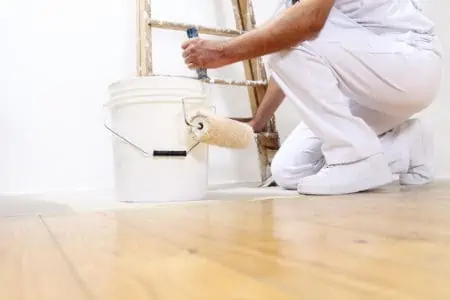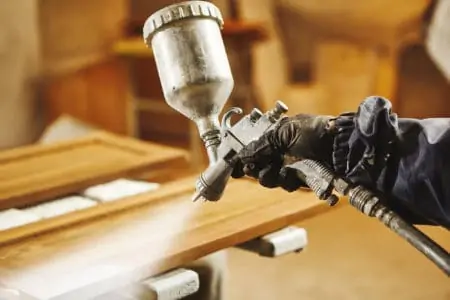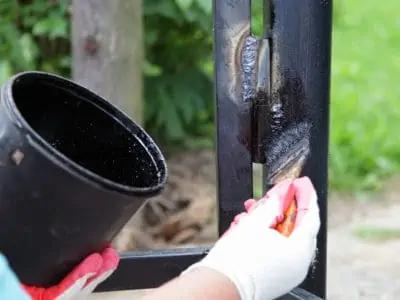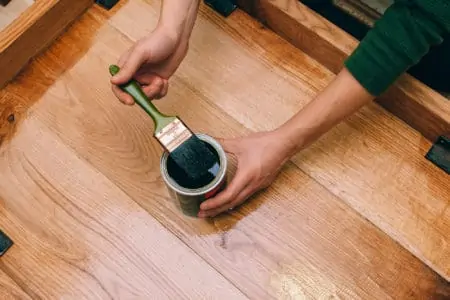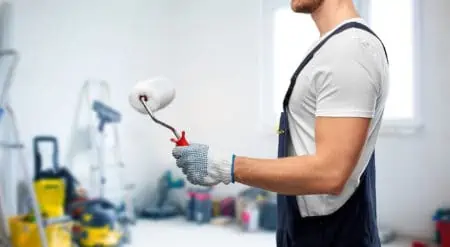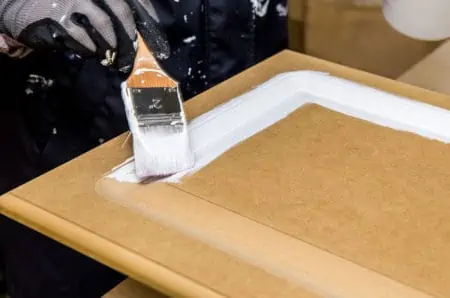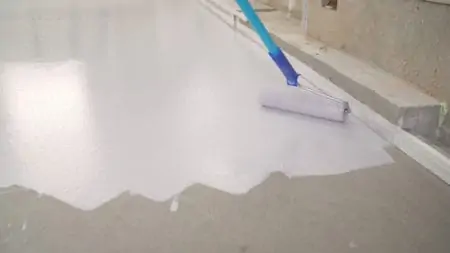Paint with primer saves you hassle, effort, and time. Imagine your projects taking days longer because you have to wait for the primer to dry before applying a topcoat. With paint and primer in one, you can incorporate both elements in a single hit.
We share the best paint and primers in one, reveal the costs of all-in-one paint, and guide you on when to use them.
Key Takeaways
- Paint and primer in one is a thicker paint that speeds up the painting process by combining primer and paint in a single layer.
- These two-in-one products work well for touching up interior walls or ceilings and save time, energy, and money.
- Using a separate primer and paint may be necessary for tougher surfaces, like exterior concrete or untreated wood.
- Some popular paint and primer in one brands include Behr, KILZ, The One, and Diamond Brite.
What Is Paint and Primer In One?
Paint and primer in one is a thicker paint that goes on in one layer, speeding up the painting process. The traditional method is to lay down two coats of primer and then two layers of paint.
Primer seals the surface to give the paint a better bond. It consists of a higher resin content and fewer pigments, which is why most primers are white.
Using a separate primer and paint builds the coats in several layers, whereas paint incorporating primer creates thicker layers.
Does Paint and Primer In One Really Work?
Paint and primer in one works well in certain situations. Taking the no-prime approach is perfectly fine if you touch up an interior wall or ceiling. Two-in-one paint saves you time, energy, and money.
However, you may need to use a separate primer and paint for tougher surfaces, like basements and exterior concrete. Self-priming paint is less robust, so it is better for furniture and interior surfaces.
Top Tip
Using paint and primer in one doesn’t mean you can’t prime separately for particularly stubborn surfaces. It gives an even better bonding surface for the 2-in-1 paint to adhere to.
When to Use Primer
Primer acts as a color neutralizer to use less topcoat when covering old paint. There are times when you can’t beat a couple of layers of primer. Imagine painting a red wall blue, or vice versa.
If you change from a dark color to a lighter one, those two layers of white primer make the task much easier. You may also need a separate primer for other surfaces:
- All porous, untreated surfaces, like concrete or drywall.
- For wood.
- For metal with untreated surfaces.
- Masonry.
- Exterior furniture.
- Siding and exterior wooden frames.
You may need to prime if you think your bare wood might bleed sap, or you are fretting about grease or old gloss affecting the paint adhesion. When using oil-based paints it might also be an advantage to use a separate primer.
When Not to Use Primer
There are very few occasions when you would skip the priming stage because it does such a crucial job. However, it would be pointless if you were patching or refreshing a wall in the same color.
Even if you were changing the color to something darker, the existing surface would be perfectly suitable to use. Also, you may not need to use a primer for clean walls and surfaces with low porosity.
When to Use Paint and Primer In One
Paint with primer built-in is ideal for repainting existing surfaces in the same or similar colors. The chances of color bleeding through are rare, so you can paint it straight on.
You can also use self-priming paint on unfinished drywall. Plus, interior surfaces are less likely to fade or suffer the ravages of exterior forces like UV and the weather.
Is All In One Paint Cheaper?
While buying one can of paint instead of two might be cheaper for lesser-known brands, premium products can often cost you more.
Let’s look at the price per gallon between the two paint varieties:
Self-Priming Paint
Applying two coats of primer and paint in one could cost as much as $25 per gallon. Allowing for the second coat means you will spend $50 per gallon. If you are tackling a substantial surface area, you may need 10 gallons.
That equates to $500 per project.
Paint and Primer
The average cost of primer is about $12 per gallon. Couple that with a water-based topcoat at $17 per gallon, and the same project would cost about $290 for two coats of each.
Why Use Paint and Primer In One?
In a nutshell, it’s more convenient. It puts the focus on time rather than money. Applying self-priming paint takes half the time to complete the task compared to two coats of primer and topcoat.
There is no waiting for each coat to dry. It means you get to enjoy the fruits of your labor a lot sooner. It’s also easier to store one can of paint, and it creates less waste when discarding the empty tins.
Best Paint and Primer In One Brands
So, we’ve talked about paint and primer in one, but what are the best brands? With several to choose from, there are a few standout names worth mentioning.
Behr
The company has come a long way since Otho Behr began selling paint from the back of his station wagon. This Behr Premium Plus comes with a lifetime warranty. It is durable, has zero VOCs (volatile organic compounds), and is low in odors.
KILZ
This product will hide the blemishes if you have marked or stained bathroom ceilings. KILZ Stainblocking Paint and Primer In One is excellent for keeping stains at bay. It goes on pink to help you get the maximum coverage but dries white.
The One
The One brand may lack the same public recognition as other manufacturers, but it is as popular according to the online reviews and sales. This paint and primer in one is chalk-based, making it ideal for wood, cabinets, walls, and furniture.
Diamond Brite
This five-gallon tub of Diamond Brite Flat Paint and Primer is ideal for larger projects. It coats walls, wood, vinyl, and drywall; in fact, it covers almost all interior surfaces. However, unlike some interior paints, this one is not suitable for metal.
FAQs
Prime Time
If speed is your number one concern, go for a primer and paint in one. It is convenient, easy to use, and gets the job done faster. Self-priming paints are ideal for internal spaces and surfaces that get less punishment from the elements.
If you are painting siding or exterior masonry, it might be better to use a separate primer and paint. Whichever you choose, always follow the instructions on the can for the best results.
